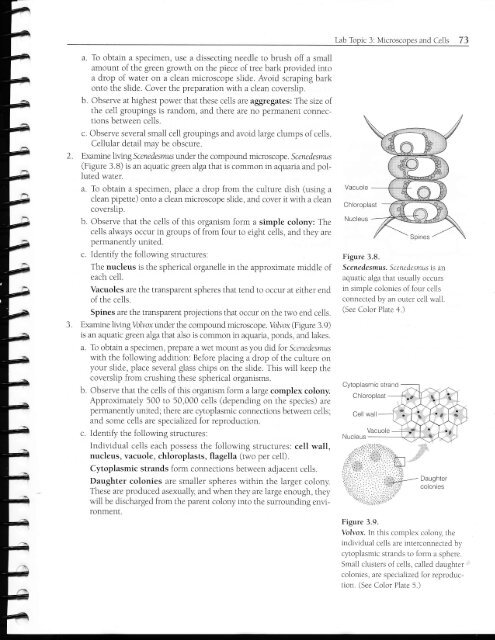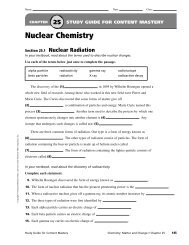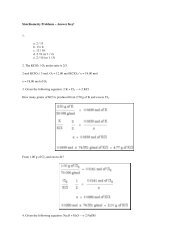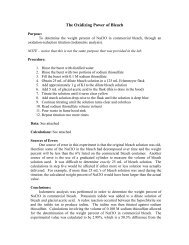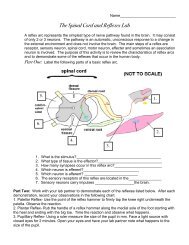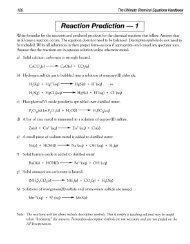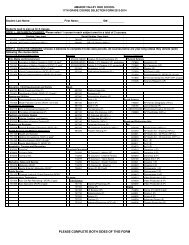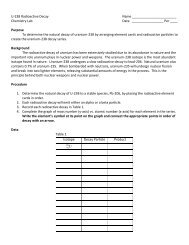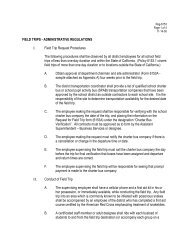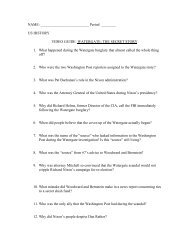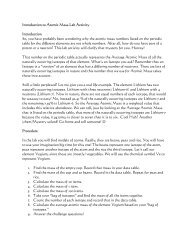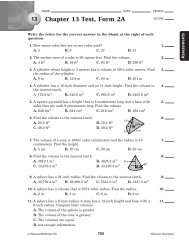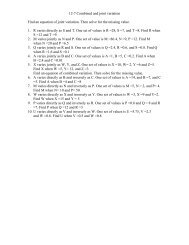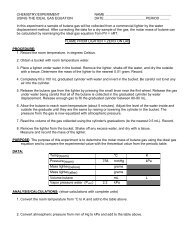Lab Topic Three
Lab Topic Three
Lab Topic Three
Create successful ePaper yourself
Turn your PDF publications into a flip-book with our unique Google optimized e-Paper software.
a. To obtain a specimen, use a dissecting needle to brush off a smallamount of the green growth on the piece of tree bark provided intoa drop of water on a clean microscope slide. Avoid scraping barkonto the sllde. Cover the preparation with a clean coverslip.b. Observe at highest power that these ce11s are aggregates: The size ofthe ce11 groupings is random, and there are no permanen[ connectionsbetween cells.c. Observe several smali cell groupings and avoid iarge clumps of cel1s.Cellular detail may be obscure.Examine liing Scenedc-smus under the compound microscope . Scenedesmts(Figure 3.8) is an aquatic green alga that is common in aquaria and po1-luted water.a. To obtain a specimen, place a drop from the culture dish (using aclean pipette) onto a clean microscope slide, and cover it with a cleancoverslip.b. Observe that the cells of this organism form a simple colony: Thecells always occur in groups of from four to eighr cells, and rhey arepermanently united.c. Identify the following structures:The nucleus is the spherical organelle in the approxima[e middle ofeach cell.Vacuoles are the transparent spheres that tend [o occur at either endof the cells.Spines are the transparent prqections tha[ occur on the two end ceils.Examine liingVoltoxunder the compound microscope. \.6lvox(Figure 3.9)is an aquatic green alga that also i.s common in aquaria, ponds, and lakes.<strong>Lab</strong> <strong>Topic</strong> 3: Mlcroscopes and Cells 73a. To obtain a speci.men, prepare a wet mount as you did for Scenedesmuswith the following addrtion: Before placing a drop of the culture onyour slide, place several glass chips on the slide. This will keep thecoverslip from crushing these spherical organisms.Cytoplasmic strandb. Observe that the cells of this organism form a large complex colony.ChloroplaslApproximately 500 to 50,000 cells (depending on the species) arepermanently united; [here are cytoplasmi connections between ce11s;and some cells are specialized for reproducrion.c. identify the following structures:Individual ce1ls each possess the following structures: cell wall,nucleus, vacuole, chloroplasts, flagella (two per cell).Cytoplasmic strands form connec[ions between adjacent cel1s.Daughter colonies are smaller spheres within the larger colony.These are produced asexually, and when they are large enough. thcywill be discharged from the parent colony into the surrounding enr,rronment.ChloroplastFigure 3.8.Scenedesmus. Scenedesmus s anaquatic alga that usually occursin simple colonies of four cellsconnected by an outer cell wa1l.(See Color Plate 4.)DaughtercolonresFigure 3.9.Volvox. In this complex colony. rheindividual cells are interconnected bycytoplasmic ttrands lo form a sphere.Small clusters of cells, called daughtercolonies. are specialized for reproduction.(See Color Plate 5.)


